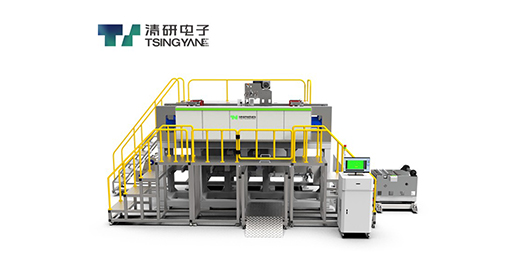Batteries are indispensable in our technology-driven world, energizing devices from smartphones to electric vehicles. Central to their function are the anode and cathode, the electrodes where chemical reactions generate electricity. The anode, acting as the negative electrode, releases electrons during discharge, while the cathode, the positive electrode, accepts them. This blog explores the roles, materials, and synergy of anodes and cathodes.
At the core of every battery, the anode and cathode drive the electrochemical reactions that produce electricity. The anode, the negative electrode, releases electrons into the external circuit during discharge, while the cathode, the positive electrode, accepts these electrons. Facilitated by an electrolyte, these electrodes enable a continuous flow of electrons, powering devices. Understanding the distinct functions and materials of anodes and cathodes illuminates their critical role in battery performance and their importance in advancing technology.
The anode and cathode form the dynamic partnership that defines a battery's efficiency, capacity, and suitability for specific applications. Their materials and design directly influence how effectively a battery delivers power, whether it's for a compact lithium-ion battery in a smartphone or a durable lead-acid battery in a vehicle. By optimizing these components, manufacturers can create batteries tailored to meet diverse technological demands, ensuring reliability and performance.
The anode is the electrode where oxidation takes place, releasing electrons into the external circuit during discharge. This electron flow is the essence of a battery's ability to generate electricity, positioning the anode as a cornerstone of energy delivery. By facilitating this critical reaction, the anode ensures that devices receive the power needed to operate efficiently.
Anode materials, typically metals or carbon-based compounds, are selected for their ability to support oxidation and maintain structural integrity. Graphite is a prevalent choice in lithium-ion batteries, valued for its high electrical conductivity and stable structure, which enables efficient storage and release of lithium ions. Lithium itself serves as an anode material in lithium-ion and other battery types, providing high energy density for specialized applications. Additionally, metals like zinc are used in primary, non-rechargeable batteries, such as disposable alkaline batteries, due to their cost-effectiveness and dependability.
In lithium-ion batteries, the anode is commonly made of graphite. During discharge, lithium ions travel from the graphite anode through the electrolyte to the cathode, while electrons flow through the external circuit, powering the connected device. This process underscores the anode's pivotal role in enabling efficient energy transfer, making it essential for applications ranging from portable electronics to electric vehicles.
The cathode is the electrode where reduction occurs, accepting electrons from the external circuit during discharge. This process complements the anode's oxidation reaction, completing the electrochemical cycle that generates electricity. The cathode's ability to efficiently accept electrons is crucial for maintaining the battery's energy-producing function.
Cathode materials are predominantly metal oxides, chosen for their capacity to accept electrons and support stable chemical reactions. In lithium-ion batteries, lithium cobalt oxide (LiCoO2) is favored for its high energy density, ideal for consumer electronics, while lithium manganese oxide (LiMn2O4) offers a balance of power and cost-effectiveness, and lithium iron phosphate (LiFePO4) is prized for its safety and thermal stability, particularly in electric vehicles. Beyond lithium-ion batteries, transition metal oxides are utilized in various battery types, and lead dioxide (PbO2) serves as the cathode in lead-acid batteries, commonly used in automotive applications.
In a lithium-ion battery, the cathode is often composed of lithium cobalt oxide (LiCoO2). During discharge, lithium ions move from the anode to the cathode through the electrolyte, while electrons travel through the external circuit to the cathode, generating electricity. This interaction highlights the cathode's essential role in completing the energy cycle, making it a fundamental component of battery performance.
The anode and cathode collaborate seamlessly, with the electrolyte enabling their interaction to produce a steady flow of electrons. During discharge, the anode's oxidation reaction releases electrons, while the cathode's reduction reaction accepts them. The electrolyte facilitates ion movement between the electrodes, maintaining charge balance. This coordinated process is the foundation of battery functionality, powering everything from small gadgets to large vehicles.
The selection of anode and cathode materials profoundly influences a battery's performance characteristics. For instance, graphite anodes paired with lithium cobalt oxide cathodes in lithium-ion batteries deliver high energy density for compact devices, while zinc anodes and lead dioxide cathodes in lead-acid batteries provide durability for automotive applications. By carefully choosing these materials, manufacturers can optimize batteries for specific needs, balancing energy capacity, power output, and longevity.
With the growing demand for batteries, researchers are innovating new anode and cathode materials to enhance performance and sustainability. Developments such as silicon-based anodes promise increased energy density, while cobalt-free cathodes aim to lower costs and environmental impact. These advancements herald a future of more efficient, eco-friendly batteries, poised to support the global shift toward electrification.
Anodes and cathodes are the unseen forces behind the devices you use daily, from charging your smartphone to driving an electric vehicle. Gaining insight into these components not only deepens appreciation for battery technology but also highlights the innovations paving the way for a sustainable energy future.
Anodes and cathodes are the driving force behind batteries, orchestrating the chemical reactions that generate electricity. From graphite anodes and lithium cobalt oxide cathodes in lithium-ion batteries to zinc anodes and lead dioxide cathodes in lead-acid batteries, these materials define the capabilities of the devices we depend on. As research continues to advance electrode materials, the future holds promise for more powerful and sustainable batteries.
 Discussing New Opportunities of Dry Electrode Technology in Solid-State Battery Industry – Dr. Wang Chen from Tsingyan Electronics Attends 2025 Gaogong Lithium Battery Summit
Discussing New Opportunities of Dry Electrode Technology in Solid-State Battery Industry – Dr. Wang Chen from Tsingyan Electronics Attends 2025 Gaogong Lithium Battery Summit
 Exclusive Report by Gaogong | An Interview with Tsingyan Electronics: Ten Questions on the Necessity of Dry Electrodes
Exclusive Report by Gaogong | An Interview with Tsingyan Electronics: Ten Questions on the Necessity of Dry Electrodes
 What Is Graphite, And Why Is It so Important in Batteries?
What Is Graphite, And Why Is It so Important in Batteries?